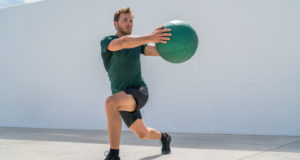Counting calories isn’t everyone’s business – but paying attention to your energy consumption is good for you, no matter if you want to lose weight or prevent performance losses. Here are a couple of useful tips for cyclists.
Basic facts about your energy consumption
There are two important terms you need to know – the first term is the so-called metabolic rate, the second achievement conversion.
The metabolic rate describes the energy your body consumes when you’re awake and not doing any physical exercises. The rate depends on age, sex and body height and is necessary to keep the body functioning properly. You can calculate your metabolic rate using different formulas and online tools. You can find a great metabolic rate calculator here.
Ex. 1: Woman, 35 years old, 170cm tall, 60kg = metabolic rate of about 1360 cal / day
Ex. 2: Man, 35 years old, 175cm tall, 75kg = metabolic rate of about 1680 cal / day
The achievement conversion is the amount of energy that’s added to the metabolic rate by the amount of work that the body accomplishes. Metabolic rate and achievement conversion add up to the total conversion per day (= metabolic rate + achievement conversion). When cycling, your achievement conversion can easily reach 10 cal per hour and kilogram at 25 km/h.
Ex. 3: 2h of cycling at 25km/h, 60kg = achievement conversion of 1200 cal
How does your energy consumption affect your ride?
Obviously, those formulas and values are only guidelines and it’s not possible to get an exact result that applies 100% to you. Many different factors influence your calorie consumption when cycling. Speed, wind, surface and the bike type all need to be considered.
- Choosing a higher gear equals more resistance and thus burns more calories
- Going uphill burns more calories than going downhill
- Headwind and cycling on an uneven surface require more work from you and are therefore better if you want burn more calories
The more muscles you’re using, the more “fuel” is needed to provide them with energy. A mountain bike ride that requires full usage of your body is more energy intensive than you and your road bike relaxedly rolling along on concrete.
Thanks to the so-called MET (metabolic equivalent of task) it is possible to compare different physical activities. 1 MET = calorie consumption of 1 cal/kg/h.
🚲 0,95 MET sleeping
🚲 1,5 MET sitting, office job
🚲 3,0 MET standing, waiter
🚲 6,0 MET cycling at 15km/h
🚲 7,5 MET weight training
🚲 10 MET cycling at 20km/h
🚲 13 MET running at 14km/h

What can I do to put this knowledge into practice?
Modern heart rate monitors can offer indications of the amount of calories you’re burning during a ride. After entering your body weight, age, sex and training stats such as your pulse and time, the monitors’ resulting calculations are quite accurate. You can use these values (or calculations using online platforms) to direct your calorie intake towards your goals.
Do you want to lose weight? Consume high-quality nutrients, take in enough fluids and aim for a balanced and nutritious diet. You can reduce your calorie intake by doing without sugar and ready-made meals.
Do you want to improve your performance? Pay attention to covering your body’s calorie requirements and supplying your body with proteins for your muscles and carbohydrates to replenish your energy stores after an endurance session. A high-quality, balanced diet full of vitamins and minerals is a must.
Attention: It is important to provide your body with sufficient energy and liquid, even if you want to shed a few kilograms. Especially on hot days and during longer rides, deficiencies when cycling can become dangerous very quickly.
Do you pay attention to your calorie consumption when cycling? 🚴🏻
Let us know in the comments! 📩
- The Top 5 Cycling Destinations in 2020 - January 14, 2020
- Your First Long Bike Ride – 200km and More - January 11, 2020
- 4.5M – The World’s Largest Cycling Route Collection - November 21, 2019






